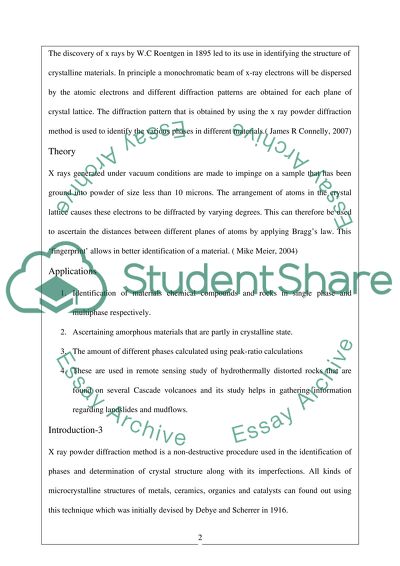Cite this document
(“X-Ray Powder Diffraction Essay Example | Topics and Well Written Essays - 1000 words”, n.d.)
Retrieved from https://studentshare.org/environmental-studies/1408583-x-ray-diffraction
Retrieved from https://studentshare.org/environmental-studies/1408583-x-ray-diffraction
(X-Ray Powder Diffraction Essay Example | Topics and Well Written Essays - 1000 Words)
https://studentshare.org/environmental-studies/1408583-x-ray-diffraction.
https://studentshare.org/environmental-studies/1408583-x-ray-diffraction.
“X-Ray Powder Diffraction Essay Example | Topics and Well Written Essays - 1000 Words”, n.d. https://studentshare.org/environmental-studies/1408583-x-ray-diffraction.


